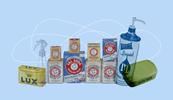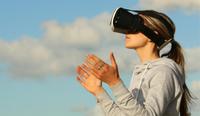Treating Health Anxiety With CBT for Panic Disorder

During my time as a staff psychologist at UCLA Counseling and Psychological Services, I treated a number of students with subclinical panic disorder, who generally experienced less than a handful of panic attacks. But over time, I started to notice a trend.
There tended to be very specific reasons why they were having panic-related fears. A student went to the ER because she thought she was having a heart attack. I found out she had recently lost her grandfather to a heart attack. Another student fainted on a crowded bus in India. He ended up having panic attacks characterized by a fear of fainting again.
So why was this happening?
A “Magic Bullet” for Panic Disorders
Like all mental health conditions, there are several biological, genetic, psychological, and environmental risk factors for panic disorder. Some people can be so conditioned to anxious sensations that sometimes they experience them without conscious awareness. Relatively minor changes in a person’s body, such as an increased heart rate or a few shallow breaths, can trigger a full-blown panic attack, making it seem like it came from out of nowhere.
Although I wouldn’t have diagnosed my students at UCLA with full panic disorder, there were clearly aspects of their anxiety that could be treated in the same way. So I developed a single-session intervention for these students based on the principles of the much longer treatment option of CBT for panic disorder. I told the graduate students and colleagues I trained on this intervention that if they could pinpoint a reason for their clients’ panic attacks—a kind of “magic bullet”—then their treatments would be more effective.
People with panic disorder often develop a “fear of fear” response. They become afraid of anxious sensations, which in turn can trigger panic attacks. This cycle is reinforced by two factors: cognitive misinterpretations of what will happen as a result of the attacks and behavioral changes that reinforce the notion that panic attacks are dangerous and need to be avoided at all costs.
CBT for panic disorder teaches people new ways to think about the attacks, and systematically reduces avoidance behaviors through in-vivo exposures. Their fear of body sensations is addressed by interoceptive exposures where the therapist guides the client to purposely bring on the symptoms of panic, so they can familiarize them with these sensations.
How Panic Disorder and Health Anxiety Are Related
First, let’s not think of health anxiety as just a somatic symptom disorder or illness anxiety disorder as it appears in the DSM-5. Think about it more broadly. It could be someone with panic disorder who fears having a heart attack, or a person with OCD who worries about contamination. It could be someone with excessive fears of COVID-19.
Second, the conceptualization of panic disorder and the interventions for it can be applied to other expressions of health anxiety. Like panic disorder, people with any type of health anxiety are overly worried that there’s something wrong with their body.
They also tend to have dysfunctional thoughts and behaviors that further their anxiety, or underlying vulnerabilities that predispose them to this type of anxiety. There also tends to be a “magic bullet,” or a specific psychological risk factor, as to why a person is so overly concerned about their health.

How to Use CBT for Panic Disorder and Health Anxiety
Client education is the first intervention with typical CBT for panic disorder, which should provide them with a roadmap for treatment. Similarly, when treating any type of health anxiety, a thorough assessment should guide the education portion of treatment.
Share your understanding of what drives their particular anxiety, including any elements of their history or thought process that you see as relevant to their case. This can demonstrate why they might be vulnerable to health anxiety, and like with panic disorder, how their thoughts and behaviors reinforce their fears.
Sometimes there are holes in the conceptualization, which can be filled in during later sessions. When I do intakes for people with panic disorder, I already know the basic outline of the conceptualization before the person even starts talking. Then, I structure my intake questions to personalize it to the individual’s unique experience.
The same is true for health anxiety. Even before I meet with the client, I know that there’s something that makes them vulnerable to having health concerns, like dysfunctional thoughts about their health or certain behaviors they engage in that reinforce their fears.
Accepting uncertainty is something I need to talk about with most health anxiety clients, even though this isn’t a traditional component of CBT for panic disorder. However, it is often a key component of treating health anxiety.
Behavioral Interventions Are Key
Now that you have a clear conceptualization of your client’s health anxiety, you’ll need to correct any cognitive misunderstandings, which may include additional research. You can also do some decatastrophizing exercises with your clients—like walking through what would actually happen if they contracted something.
Behavioral interventions also will be essential for treatment. You might need to help your clients stop excessive internet searching, or brainstorm together what your client might say to their partner the next time they ask for reassurance. You can redirect your client’s attention to something external when they start to notice that they’re paying too much attention to their body.
CBT can be an effective method for treating panic disorder, but it would be a disservice to clients to let those principles stop there. As more studies are done about the efficacy and uses of cognitive behavioral therapy, clinicians can look for ways to apply this treatment method to other disorders as well—like health anxiety.
Use tools like our CBT worksheets to help clients identify and change automatic negative thoughts or reactions.
More Stories
Stay inspired
Get the latest stories from your peers right to your inbox.








